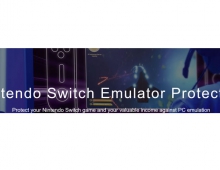
Copy protection is crossing boundaries
Anti-copying software designed to protect multiple music and video formats on different devices has been released by video streaming company Real Networks...
Digital rights management (DRM) technology restricts or entirely blocks copying of digital media. Record and music companies believe this is needed to prevent unauthorised copying. But the technology is also controversial because it can restrict legitimate copying or playback on computers.
Most other DRM systems are designed to protect a particular audio or video format, but Helix DRM, from Real Networks, provides a block against copying of numerous formats.
The technology works with the company's Helix media player and the company made the programming code for this player freely available in October 2002 to encourage its adoption on different hardware platforms, such as handheld computers and TV set-top boxes.
Emerging standards
Helix DRM would let entertainment companies protect their content on a range of platforms that may use different digital formats. This includes Real Network's RealAudio and RealVideo formats, MP3 audio and the emerging MPEG-4 and H.263 standards.
DRM technology is become more widely used, but some computer users complain that copy-prevention stops them making legitimate copies of material they have bought.
On 8 January, a Norwegian teenager was acquitted by the Norwegian Supreme Court of illegally using a software program he wrote to defeat the copy-prevention that comes on DVD disks, called DeCSS. Jon Lech Johansen maintains that he created the application to decode, copy and watch videos he owned on his computer system.
Real Networks faces stiff competition from companies including Microsoft in the emerging anti-copying market. Microsoft announced its plans to license its Windows Media Player, which has its own DRM capabilities, to non-Microsoft platforms on 7 January. Analysts believe this is designed to encourage its use on a broader range of devices and computer systems.
DRM technologies that are applicable across platforms and media formats may appeal to copyright owners by providing blanket coverage. But it may also mean that hackers need only break one system to be able to duplicate a large amount of content.
Most other DRM systems are designed to protect a particular audio or video format, but Helix DRM, from Real Networks, provides a block against copying of numerous formats.
The technology works with the company's Helix media player and the company made the programming code for this player freely available in October 2002 to encourage its adoption on different hardware platforms, such as handheld computers and TV set-top boxes.
Emerging standards
Helix DRM would let entertainment companies protect their content on a range of platforms that may use different digital formats. This includes Real Network's RealAudio and RealVideo formats, MP3 audio and the emerging MPEG-4 and H.263 standards.
DRM technology is become more widely used, but some computer users complain that copy-prevention stops them making legitimate copies of material they have bought.
On 8 January, a Norwegian teenager was acquitted by the Norwegian Supreme Court of illegally using a software program he wrote to defeat the copy-prevention that comes on DVD disks, called DeCSS. Jon Lech Johansen maintains that he created the application to decode, copy and watch videos he owned on his computer system.
Real Networks faces stiff competition from companies including Microsoft in the emerging anti-copying market. Microsoft announced its plans to license its Windows Media Player, which has its own DRM capabilities, to non-Microsoft platforms on 7 January. Analysts believe this is designed to encourage its use on a broader range of devices and computer systems.
DRM technologies that are applicable across platforms and media formats may appeal to copyright owners by providing blanket coverage. But it may also mean that hackers need only break one system to be able to duplicate a large amount of content.




















